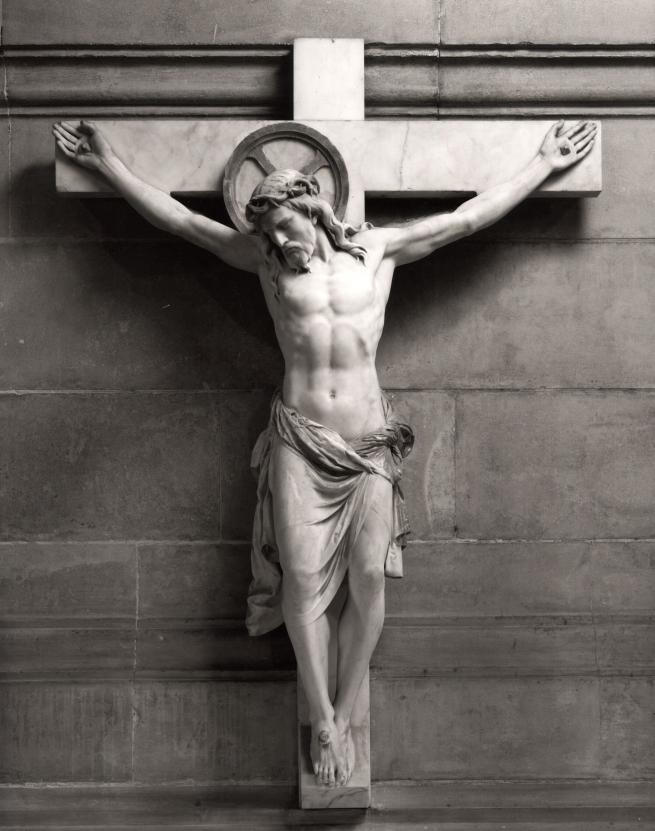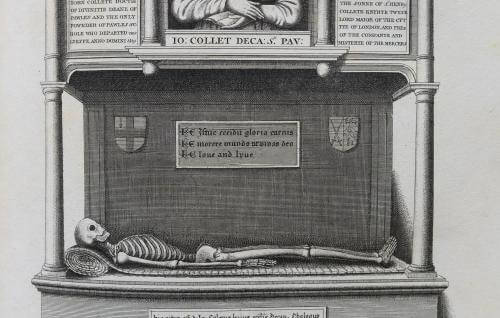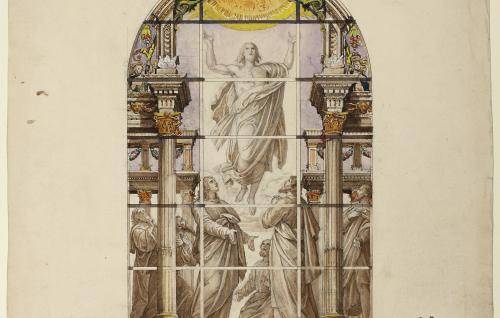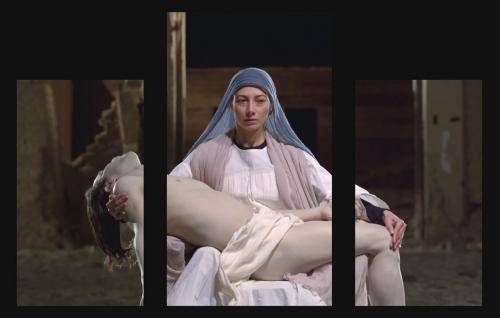The Crucified Christ

The Crucified Christ
This beautifully sculpted marble figure of Christ was once the centrepiece of an elaborate reredos (a decorated screen) that stood behind the Cathedral’s High Altar.
An account of The Crucifixion of Christ can be found in all four of the Gospels. St Luke records the prayer Christ offered from the cross for those who persecuted Him, and the last words he spoke: ‘Father, into thy hands I commend my spirit’. The full crucifixion scene on the reredos depicted Christ on the cross surrounded by mourning angels and a gathering of five figures at the foot of the cross: The Three Marys, St John and a Roman soldier, Stephaton, who leaned on his spear.
Dean Robert Gregory’s legacy
Dean Robert Gregory commissioned the reredos as part of his plan to reinvigorate the Cathedral’s decoration. He had strong opinions from the very start – remarking at his own installation that: ‘A more miserable and disgracefully slovenly service I never saw’. However, despite being warned against making any changes or improvements to the Cathedral by Minor Canon Mr Coward, Gregory was not dissuaded.
He first began improving the financial administration of the Cathedral, becoming Treasurer until 1904. Under his strict oversight, and his insightful appointment of choirmaster and composer John Stainer, the Cathedral’s choir also grew much larger and more disciplined. In 1871, due to Gregory’s enthusiasm for religious education, a new series of evening lectures also began – aimed at young local businessmen. T. Francis Bumpus, a choir boy during the time, remarked that:
‘The grand old Cathedral was becoming daily more and more the Spiritual home of the living faith of a great people after a long period of coldness and laxity.’
Slowly, the antagonism he faced initially gave way to qualified respect for his innovative ideas and his methods of achieving change.

Drawing showing proposed design for the Reredos by Bodley and Garner, 1888 (Ref. No. SPCAA/D/3/1)
An important work in the Italian style
George Frederick Bodley was first invited by Gregory to submit designs for the reredos in 1883.
It featured spiral columns that supported a triangular pediment and the whole ensemble was topped off with the figures of the Virgin and Child and the Risen Christ. It was made of marbles in many colours and the lower register housed gilded relief sculptures of biblical scenes.
Later in the design, wings were added to curl around and fill the whole of the east end of the Quire. Two bronze doors led through the screen to what became The Jesus Chapel behind.
The completed reredos was dedicated on St Paul’s Day, 29th June 1888. While Bodley’s partner Thomas Garner hailed it as ‘the most important work of the kind ever erected in England in the Italian style’ and the Cathedral Chapter considered it a fitting focus for contemplation, the introduction of the screen was not universally welcomed and it became a point of contention between different strands of Anglicanism.
The future of the screen was decided on the evening of 10 December 1940 when a bomb penetrated the roof of the Quire. Although it failed to explode, it caused significant damage to the screen and High Altar. Several of the pieces were salvaged and remain in the Cathedral collection. This figure of The Crucified Christ is the most significant, symbolising the essence of Christ’s sacrifice as well as being a remarkable survival.








